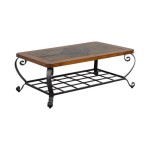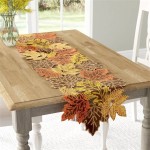How Many Types of Table Service Exist?
Table service, a fundamental aspect of the dining experience, encompasses the various methods by which food and beverages are served to guests at a restaurant or similar establishment. From the traditional formality of white-glove service to the casual efficiency of quick-service options, the type of table service employed significantly influences the atmosphere, dining pace, and overall guest experience. Understanding the different types of table service is crucial for restaurateurs in tailoring their service style to their target audience and desired dining ambiance.
Formal Table Service
Formal table service, often referred to as "white-glove service," is the most elaborate and time-consuming style. It emphasizes meticulous attention to detail, impeccable presentation, and a highly personalized service. Typical characteristics of formal table service include:
- Multiple Courses: Diners are presented with a multi-course meal, often with a fixed menu.
- Dedicated Server: Each table is assigned a dedicated server who manages all aspects of the dining experience.
- Silverware and Tableware: Formal settings utilize a wide array of silverware and glassware, each with a specific purpose.
- Course Presentation: Dishes are presented with elegant plating and garnishes, and servers may describe each course in detail.
- Pace of Service: The service is deliberate and paced to allow for a leisurely dining experience.
Formal table service is commonly associated with fine dining establishments and special occasions. It conveys exclusivity and sophistication, catering to discerning palates and creating a luxurious atmosphere.
Casual Table Service
Casual table service offers a more relaxed and informal approach to serving guests. This style prioritizes efficiency and convenience, making it suitable for a wider range of restaurants and settings. Key characteristics of casual table service include:
- Simpler Menu: The menu typically features fewer courses and a broader selection of dishes.
- Limited Tableware: The use of silverware and glassware is typically more streamlined, with a focus on practicality.
- Shared Servers: Servers may be responsible for multiple tables, offering a more efficient service flow.
- Faster Pace: The service is generally quicker, catering to a faster turnover rate.
Casual table service can be found in various restaurants, including casual dining, bistros, and family-friendly establishments. It offers a comfortable and welcoming atmosphere, prioritizing customer satisfaction without the formality of white-glove service.
Hybrid Table Service
Restaurants often utilize hybrid table service models, combining elements of formal and casual styles to create unique dining experiences. These hybrid models adapt to the specific needs of the restaurant and the target audience. Some common hybrid service models include:
- Semi-Formal Service: This model incorporates some elements of formal service, such as multiple courses and elegant presentation, but with a more relaxed atmosphere and streamlined service.
- Table-Side Service: Often seen in casual settings, table-side service involves servers bringing dishes to the table and presenting them directly to guests. This can include preparing dishes, such as Caesar salads, or carving meats.
- Fast Casual: While not technically "table service," fast-casual establishments offer a hybrid approach. Guests order at the counter, but their food is brought to their table, offering a balance of convenience and table service.
These hybrid service models provide flexibility for restaurants seeking to cater to diverse customer preferences and dining experiences. They offer a range of options that balance formality, efficiency, and customer satisfaction.
Additional Service Styles
Beyond the traditional categories of formal, casual, and hybrid service, various additional service styles are gaining popularity. These innovative approaches cater to specific dining needs and preferences. Examples include:
- Butler Service: Often used in upscale events, butler service involves servers standing discreetly and offering attentive service to guests throughout the event.
- Family Style: Dishes are served on platters and placed on the table, allowing guests to serve themselves. This style encourages a sense of community and shared dining.
- Prix Fixe Service: A fixed-price menu with a predetermined sequence of courses, offering a curated dining experience. This style is often used in fine dining and special events.
These additional service styles demonstrate the evolving landscape of table service, showcasing a broader range of options designed to enhance the guest experience.

Table Service Styles Placements And Functions Polo Tweed

Types Of Table Service Ii American Silver Gueridon English Russian French

Table Setting Diagrams Formal Fine Casual More Set Ups

Table Service Styles Placements And Functions Polo Tweed

Types Of Service And Table Settings In Waiter Waitress Training

Table Setting Diagrams Formal Fine Casual More Set Ups

Types Of Table Service Ii American Silver Gueridon English Russian French

The Diffe Types Of Table Service You Need To Greycoat Lumleys

Table Setting Diagrams Formal Fine Casual More Set Ups

Types Of Table Service Hotel Management Studies
Related Posts








